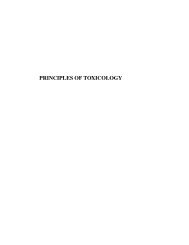Insect-pests - Biology East Borneo
Insect-pests - Biology East Borneo
Insect-pests - Biology East Borneo
You also want an ePaper? Increase the reach of your titles
YUMPU automatically turns print PDFs into web optimized ePapers that Google loves.
26 <strong>Insect</strong> Pests and Diseases of Major Plantation Species<br />
Experience with extensive eucalypt plantations outside<br />
Indonesia is similar. The buprestid borer, Agrilus<br />
sexsignatus, which affected some plantations in the<br />
Philippines, was restricted to plantations growing on<br />
poor sites and a particular provenance. Two serious<br />
<strong>pests</strong> of eucalypts of Australian origin, Phoracantha<br />
(borer) and Gonipterus (defoliator), were accidentally<br />
introduced into some eucalypt growing countries in<br />
Africa and the Mediterranean where they spread rapidly<br />
causing economic damage. Therefore, vigilance is<br />
necessary against accidental introduction of these <strong>pests</strong>.<br />
Nursery diseases can be kept in check by using<br />
fungicides and appropriate nursery management<br />
techniques. However, root disease affecting older trees<br />
is a serious problem which is likely to be aggravated in<br />
the future because inoculum build up will occur over<br />
successive short rotations and there is no effective control<br />
method. Root isolation by trenching around diseased trees<br />
is practised but is costly and not fully effective.<br />
Phytophthora sp. is one of the causative agents identified.<br />
Phytophthora cinnamomi is a serious and widespread<br />
pathogen of E. marginata (jarrah) forests in Australia,<br />
with a wide host range (Keane et al. 2000). There is<br />
urgent need for an in-depth study of the fungi associated<br />
with root rot of eucalypts in Indonesia and to screen<br />
Eucalyptus species and provenances for resistance to<br />
root rot. Leaf diseases, e.g. Cylindrocladium spp., have<br />
been a serious problem in humid tropical environments<br />
in parts of Asia, but while some have been recorded in<br />
Indonesia, e.g. Macrophoma sp., they are not yet<br />
considered a potential threat.<br />
4.10. Eusideroxylon zwageri<br />
Indonesian common name: Ulin<br />
Eusideroxlon zwageri (Lauraceae), also called ironwood,<br />
is a highly valued indigenous timber species in Indonesia.<br />
It is a monotypic species distributed in Sumatra,<br />
Kalimantan and some adjacent islands (Kostermans et<br />
al. 1993). It is one of the heaviest and highly durable<br />
timbers and has a variety of uses. In Sumatra and<br />
Kalimantan it is traditionally used for roof shingles.<br />
Plantations are being established in South Kalimantan.<br />
<strong>Insect</strong> <strong>pests</strong><br />
There are no records of <strong>pests</strong> on the living tree, but<br />
seeds are damaged by insects (Kostermans et al.<br />
1993). The wood is highly resistant to termite attack.<br />
Diseases<br />
No disease of the living tree is on record.<br />
Threat assessment<br />
Although there is very little plantation experience with<br />
this species, available information suggests that there<br />
is no threat of <strong>pests</strong> and diseases.<br />
4.11. Gmelina arborea<br />
Indonesian common name: Gmelina<br />
Gmelina arborea (Verbenaceae) is exotic to<br />
Indonesia, although the related G. moluccana occurs<br />
naturally in the Moluccas (Yap et al. 1993). It is a<br />
relatively fast growing species, which produces a<br />
lightweight hardwood suitable for construction,<br />
carving, etc. It also yields good quality pulp. There<br />
are large-scale plantations in Sumatra (Riau, West<br />
Sumatra, Jambi, South Sumatra and Lampung),<br />
Kalimantan (West, Central, South and <strong>East</strong><br />
Kalimantan) and the Moluccas (Fig. 2.1). Small<br />
plantations have been raised in Java.<br />
<strong>Insect</strong> <strong>pests</strong><br />
No major insect <strong>pests</strong> have been found on G. arborea<br />
plantations in Indonesia, although there are minor <strong>pests</strong>.<br />
One of the insects consistently associated with it is a<br />
carpenter worm, Prionoxystus sp. (Lepidoptera,<br />
Cossidae). The larva bores into the stem of saplings,<br />
feeds from within and weakens the tree. In <strong>East</strong><br />
Kalimantan, 5-70% of saplings may be infested<br />
(Ngatiman and Tangketasik 1987) and it also occurs in<br />
Java and Sumatra. Injecting the larval tunnel with<br />
lubricant oil and plugging the hole was effective for<br />
control (Pramono et al. 1998). One of us (K.S.S.N.)<br />
observed at Sebulu, <strong>East</strong> Kalimantan about 80% of<br />
saplings stumped to produce multiple shoots in a clonal<br />
multiplication area, were infested by this borer. The<br />
infestation is conspicuous because the larval frass<br />
accumulates on the ground, at the base of the plant.<br />
However, the damage is not serious. Multiple infestations<br />
may weaken the saplings, but they are not killed, and<br />
the insect does not build up in large numbers because it<br />
passes through only one generation per year. Shoot<br />
cuttings kept in the nursery for rooting were attacked<br />
by an unidentified borer, possibly, Alcidodes ludificator<br />
(syn. Alcides gmelinae) (Coleoptera, Curculionidae).<br />
This small curculionid beetle bores into the young green
















